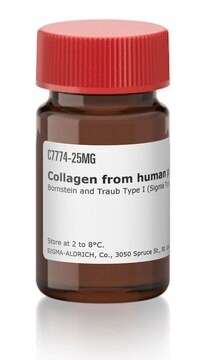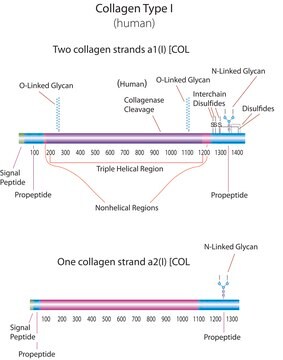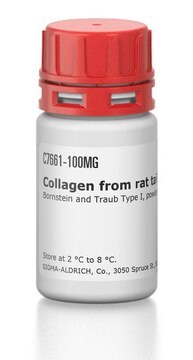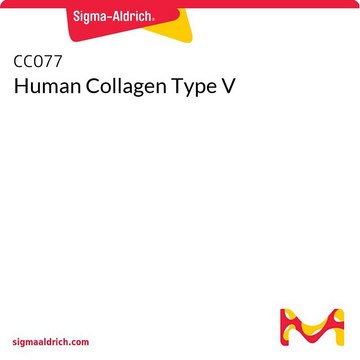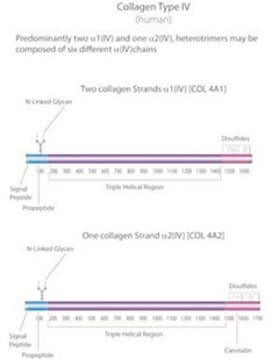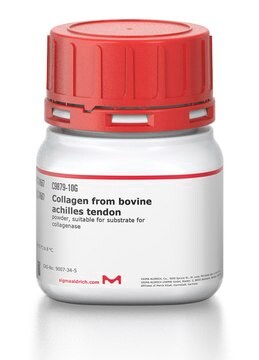C7624
Collagen human
Bornstein and Traub Type I, recombinant, expressed in Nicotiana tabacum (tobacco)
Sinónimos:
Collage™
About This Item
Productos recomendados
origen biológico
human
Nivel de calidad
recombinante
expressed in Nicotiana tabacum (tobacco)
Análisis
>90% (SDS-PAGE)
formulario
liquid
concentración
2.5-3.5 mg/mL protein (Sircol method)
técnicas
cell culture | mammalian: suitable
Condiciones de envío
wet ice
temp. de almacenamiento
2-8°C
Información sobre el gen
human ... COL1A1(1277) , COL1A2(1278)
¿Está buscando productos similares? Visita Guía de comparación de productos
Descripción general
Forma física
Nota de preparación
To prepare a collagen gel the fibrillogenesis buffer contains 162 mM sodium phosphate dibasic (Na2HPO4) adjusted to pH 11.2 with 10 N NaOH, filter sterilized. Mix 9 volumes of Collagen at a concentration of 0.3%-1% with 1 volume of fibrillogenesis buffer. Mix well and incubate for 4 to 16 hours at 25°C to 27 °C. Higher concentration of collagen solution might need optimization. Thiis preparation will not spontaneously form a gel in PBS or cell culture medium.
Preparation of collagen sponge: concentrate gel to 10 mg/ml - 100 mg/ml by centrifugation, freeze dry. Crosslink by common methods found in the scientific literature such as 1-Ethyl-3-[3-dimethylaminopropyl]carbodiimide hydrochloride (EDC), Glutaraldehyde or thermal dehydration.
Other forms: membranes, sheets, fibers can be prepared by methods commonly used with other types of collagen.
Información legal
Código de clase de almacenamiento
13 - Non Combustible Solids
Clase de riesgo para el agua (WGK)
nwg
Punto de inflamabilidad (°F)
Not applicable
Punto de inflamabilidad (°C)
Not applicable
Certificados de análisis (COA)
Busque Certificados de análisis (COA) introduciendo el número de lote del producto. Los números de lote se encuentran en la etiqueta del producto después de las palabras «Lot» o «Batch»
¿Ya tiene este producto?
Encuentre la documentación para los productos que ha comprado recientemente en la Biblioteca de documentos.
Los clientes también vieron
Nuestro equipo de científicos tiene experiencia en todas las áreas de investigación: Ciencias de la vida, Ciencia de los materiales, Síntesis química, Cromatografía, Analítica y muchas otras.
Póngase en contacto con el Servicio técnico